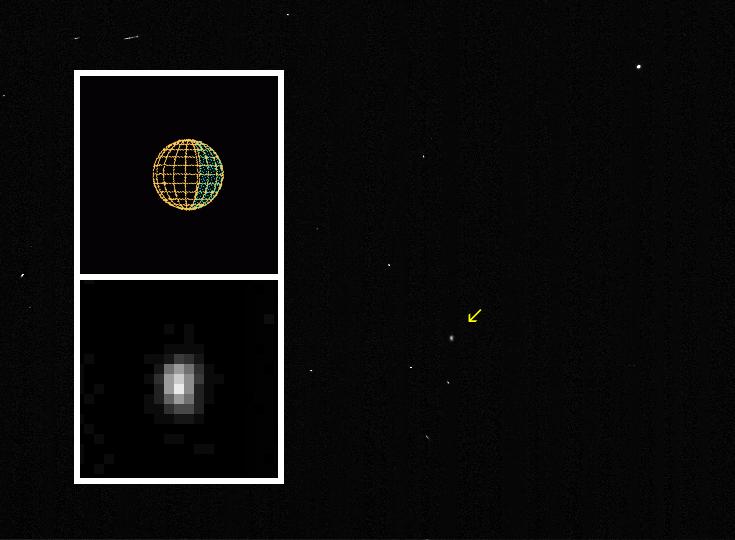Himalia

Discovery
Himalia was discovered on 3 December 1904 by Charles Dillon Perrine in photographs taken with the Crossley 36-inch (0.9 meter) reflector of the Lick Observatory on Mount Hamilton at the University of California, San Jose.
Overview
Himalia is the fifth largest moon orbiting Jupiter. With a mean radius of 85 km assuming an albedo of 0.04), it's only about 5% the size of the fourth largest moon, Europa. But it's by far the largest member of the Himalia group, a family of Jovian satellites which have similar orbits and appearance, and are therefore thought to have a common origin.
Himalia may be the largest remaining chunk of an asteroid (a C- or D-class asteroid, judging by the fact that it reflects only about 4% of the light it receives), which had several pieces broken off in a collision either before or after being captured by Jupiter's gravity. In this scenario, those pieces became the other moons in the Himalia group: Leda, Lysithea and Elara. A fifth moon, called S/2000 J11, only about 1.2 miles (2 kilometers) in radius, was considered a candidate for this group. However, it was lost before its orbit could be definitively determined. It may have crashed into Himalia, reuniting two pieces of the former asteroid, and perhaps creating a faint temporary ring of Jupiter near the orbit of Himalia.
At a distance of about 7.1 million miles (11.5 million kilometers) from Jupiter, Himalia takes about 251 Earth days to complete one orbit.
How Himalia Got its Name
Himalia was named for a nymph of the island of Rhodes in Greek mythology who was one of the lovers of Zeus (the Greek equivalent of the Roman god Jupiter). She bore him three sons: Spartaeus, Cronios and Cytus.
A name ending in "a" was chosen for this moon in keeping with the International Astronomical Union's policy for designating Jupiter's outer moons which have prograde orbits (orbiting in the same direction as Jupiter's rotation)




